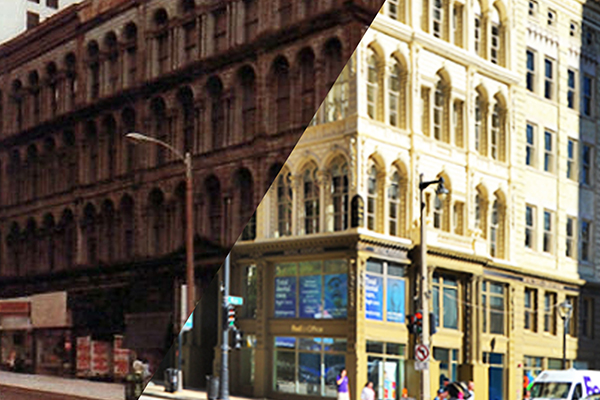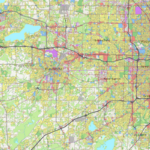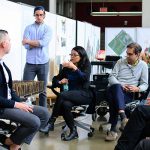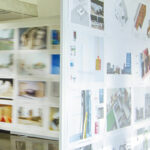Time and Place
Time: 4:30 pm to 6:30 pm
Location: Pritzlaff Building 325 N Plankinton Ave, Milwaukee, WI 53203
Please register for the workshop by emailing Matt Jarosz at mjarosz@uwm.edu
Workshop
Sponsored by the Historic Preservation Institute at SARUP
Metals: Restoring the Iron Block building in Milwaukee, adaptively reusing the iron swing bridge on the Milwaukee River, and saving, restoring, and recasting decorative cherubs from the water fountain at the World’s Columbian Exhibition – Chicago 1893
Workshop Summary:
This workshop will exam several creative ways to deal with historic iron structures. The intent is to dispel the many myths associated with the obsolescence of iron structures, either as buildings or as engineering feats. As the world of ecological concern and environmental stewardship expands, saving and reusing iron is becoming a new and important challenge. The shear mass of stone and brick loadbearing structures with bearer wall construction is counterintuitive to the preservation methodology of iron and thin wall construction, particularly in northern climates where the brutality of constant freeze thaw cycles tears through the materiality of iron and steel.
The challenge is acute as the late 1800’s and early 1900’s witnessed experimentation with iron and steel that did not bring associated research and proof of concept timelines that traditional masonry and wood construction did. Nonetheless, the architectural and engineering attractiveness of these buildings and structures were impactful in the most profound way. The modern movement itself depended on the construction methodology and aesthetic features of iron, steel, and glass. Today, we are challenged with matters of retention, restoration and reuse, without time-honored examples of success. This workshop will illustrate 3 different attitudes about iron restoration and reuse. The first presentation will document the struggle to save and restore, for reuse, Milwaukee’s oldest iron façade. The Iron Block building is not only a treasure in Milwaukee, but it is also a national treasure as one of only a few surviving 4 sided iron facade structures. It represents a fascinating and innovative idea about building facades in 1850. It is unique and unusual, but also an important technical challenge about saving innovative iron construction that has miraculously survived. The complete story of the restoration will be presented – research, technical, aesthetic, costs, maintenance, accessibility, etc. will all be addressed
The second presentation will explore the possibilities of reusing an abandoned iron swing bridge in the Milwaukee River. The bridge represents a new collection of open web railroad river bridges that are no longer needed by the railroad companies. Not capable of handling car or bus traffic, they are destined for removal. Nonetheless, they are part of our world as wonderful, visual elements of the past as well as representative of industry in rustbelt cities that was the engine of the American industrial revolution that effected the entire world. The current challenge is not just technical but also programmatic. How do we use these old engineering structures. The presentation will show an innovative proposal for Milwaukee that has potential for actual implementation.
The final presentation will show the discovery and reuse idea of the zinc statue from the World’s Columbian Exhibition in Chicago in 1893. The statue will be on display at the workshop location and the owner will show the laser scanning operation and the path to restoration and reconstruction of the statue. The decorative cherubs and leafy foliage will be documented properly and be the necessary mold product for an accurate and proper repair operation of the original fountain. The workshop setting is intended to field questions and comments from experts and artisans involved in this type of unique work. This presentation is designed to help provide the Architect and the Engineer valuable information. This information can be used to protect the Project Owner when making important decisions regarding the building and its materials. Knowing the right questions to ask can make all the difference.
Workshop Presenters:
The Iron Block Building Restoration, Milwaukee
Scott Hoppenworth – The Bond Company – West Milwaukee, Wisconsin An industry leader in iron restoration and replacement.
Milwaukee River swing bridge restoration and reuse.
John Everitt – Bray Architects, Milwaukee, Wisconsin – A designer’s perspective – model, renderings, virtual reality.
1893 Columbian Exhibition, Chicago: Main zinc fountain
Kendall Breunig – Sunset Investors Company, Franklin, Wisconsin
Amanda Wagner – Davenport Industries, Milwaukee, Wisconsin
Laser scanning and repairing the original zinc fountain statue.
Questions, comments?
All events are free and open to the public.
Additional information about the lectures and exhibitions can be found by contacting the main reception at (414) 229-4014, and by emailing any inquiries to HPI Matthew Jarosz.



